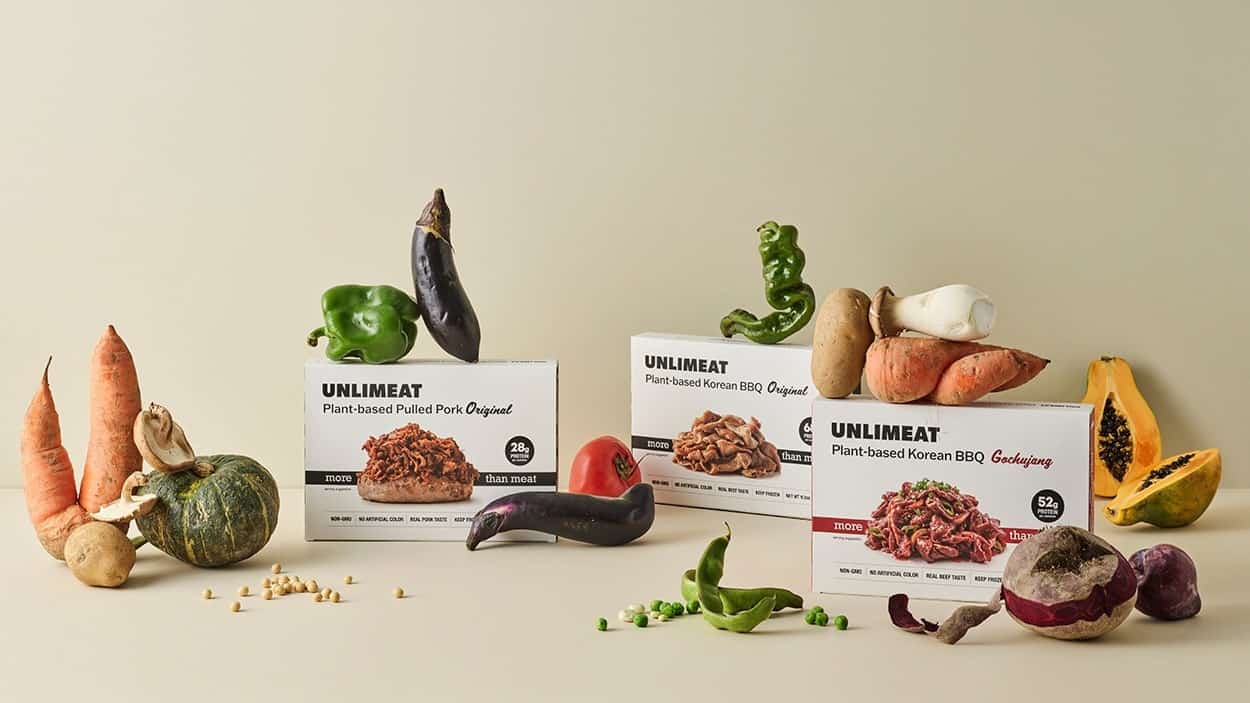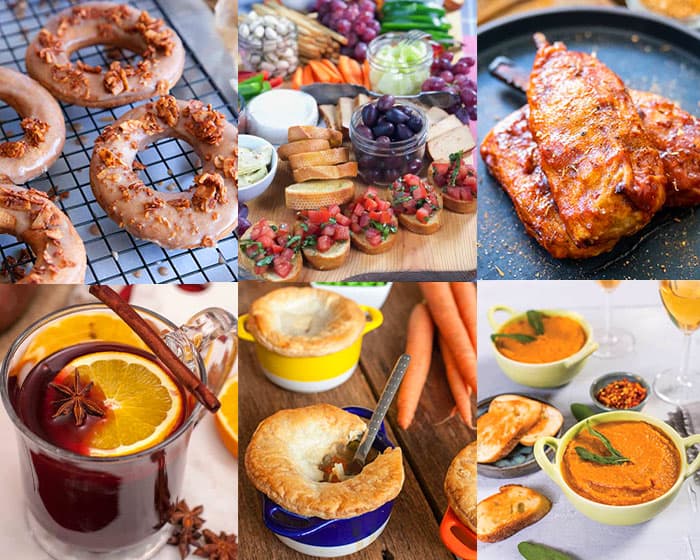The world will run out of sustenance by 2050. Foodtech is pushing culinary and wellness boundaries. The race for more laboratory alternatives to meat escalates.
By Ravi Shankar
Dairy is having a Macbeth moment. The milk of human kindness overflows at US-based biotech startup Perfect Day, where cows have been taken out of the milk-making process—the company is named after Lou Reed’s song, which is proven to make bovines happy and udder up more lactose.
No more animal meat or greenhouse gases, thank you; the firm’s 30-everything founders grow and sell cultured milk untouched by hoof. Food engineering is the new bitcoin: Perfect Day’s founders Ryan and Perumal have big-boy backers such as Leonardo DiCaprio and Robert Iger, chairman of The Walt Disney Co. Among its top-selling products is cheese made with patented cow-free whey protein.
In October, the Israeli company, Redefine Meat, signed a deal with export behemoth Giraudi Meats to distribute ‘New Meat’ steak cuts produced on 3D printers in Europe. One of the world’s leading plant-based meat producers, it claims it can “fabricate anything from a juicy steak to a smokey brisket”. Its bestselling lamb shanks and bratwurst are made with soy and pea proteins, chickpeas, beetroot, nutritional yeasts and coconut fat.
Quantum physics selfie time has dawned on food tech, the next frontier in the clean living biosystem—manufacturing meat from plants has become possible in a world whose 75 per cent of the food supply comes from just 12 vegetal and five animal species.

Plant-based meat is an idea whose hour has come, but there’s more to it. Vijayawada-born Uma Valeti, the co-founder of Upside Foods, produces real meat from the cells of animals without making them literally dead meat. For example, his scientists cooked up a cell-cultured hamburger in a lab in Berkeley, CA. While working at Mayo Clinic back in 2005, the cardiologist-turned-entrepreneur realised that if heart muscle tissue can be repaired with stem cells, then animal muscle tissue, or meat, too can be.
All the animal cells in Valeti’s bioreactors have to do is to become super-quality meat cells, two to three weeks after they are bunged in and fed super-nutrients like glucose. Grown in a highly controlled lab environment from A to Z, the meat is also safe from nasty bugs like salmonella.
Seafood is the world’s third major source of protein, but greed has cast its nets wide, and over 90 per cent of wild fisheries are classified as ‘overfished’. Plant-based, fermentation-enabled products though open the possibility of having your (crab) cake, and eating it too, says Nicole Rocque, senior innovation specialist at Good Food Institute India.
According to food industry leader Dhiren Kanwar, almost 10 times the research and development on plant meat is going into lab-grown meat. “While this is used for chicken or beef, it is particularly successful in seafood, because it is difficult to replicate the delicate texture. There are quite a few wins already, and we will see more tuna and white fish items in the market,” he says.
The ‘Future of Food’ concept was born 15 years ago, when GMOs were introduced in the American market. GMO, or genetically modified organism, refers to foods created by playing around with genes of comestibles. The next step up is the Future of Eating. Technology is creating Foodenstein monsters by the hour: General Electric is ready with food printers, which it believes is one way to kayo world hunger.
Nosh is only three kinds—wheat, rice, and maize—which make up 60 per cent of our edible stuff. It does matter what we eat and how we eat. Monocultural farming—planting the same crops over and over again—is leaching the soil of the good stuff. In 2018, CSIRO, Australia, predicted that since global food demand will grow by 14 per cent each decade, the world will need to double its food production.
Epicurean innovations, anyone? The old saying that you can’t live on love and fresh air is as outdated as Sanjeev Kapoor on YouTube; air could, indeed, feed the world by 2050 with alternative proteins. Food futurologists like Dr Morgaine Gaye think this century’s culinary philosopher’s stone is Air Protein, a miraculous substance which can turn any product into anything using high-tech fermentation. For example, Air Protein can make trout from carbon dioxide or paneer. Or pain-free faux grass.
Amanda Little, the author of The Fate of Food: What We’ll Eat in a Bigger, Hotter, Smarter World, is certain that such back-end innovations will change what and how we eat. There are two conflicting food camps in her ethical eating class: the deinventors and the reinventors. The first champion a return to a pre-Green Revolution era that thrives on organic farming methods, while the second are looking for tech-driven solutions for smart food.

In the middle is the fastest-growing food tribe: flexitarians. They are the gastronomical demographic that food marketers are now hungry for. Flexitarian, not to be mistaken for vegan and vegetarian, is a portmanteau word of flexible and vegetarian. Flexitarians aka casual vegetarians are semi-vegetarians, who go for plant-based foods and don’t abstain from meat entirely. Instead, they add some meat occasionally to supplement their plates.
A research survey by taste and nutrition company Kerry concluded that 41 per cent of Indians consume six or more types of plant proteins, with most of their meals comprising pulses, salads, lentils or cooked vegetables sans any meat. One-third of India is vegetarian and the other 70 per cent of non-vegetarians eat plant proteins regularly.
The eclectic flexitarians, who equally love meat, meat alternatives and vegetarian foods, are taking plant-based meat mainstream. Gunjan Pandey, Marketing Director for Kerry Southwest Asia, told New Food magazine about India’s $171-million alternative meat market, “And while non-vegetarians prefer meat, they, along with vegetarians and vegans, are willing to try plant-based alternatives and experiment with its textures and flavours.”
There is general distaste among millennials and zillennials that somehow we’ve taken the bounty of the earth without giving back and corrupted the source, especially after Covid-19. A survey by Vejii, an online sustainable food platform, noted that over 59 per cent of young Americans identified as flexitarians, and 63 per cent would switch to plant-based alternatives.
Faced with such disruptive scenarios, food companies, chefs and markets are running the table looking for a big chow win-win. British IBS and diet expert Emer Delaney advises newbie flexitarians to include plant-based foods in every meal, which means at least five portions of fruits and vegetables daily and wholegrain foods.
To compensate for the loss of iron in red meat, low-sugar, iron-fortified breakfast cereals and dark green, leafy vegetables such as spinach, cabbage, kale and broccoli are recommended. The common belief that the Covid-19 virus came from a bat in a wet market has forced Zoomers to rethink kai: is a return-to-roots gastronomic scenario in a lab-tested, sustainable sort of way, food for thought? Which foliage packs a Vitamin punch? What nuts did the ol’ timers snack on while they dug aqueducts in the tropical sun? What’s on the plate this time?
This much is sure: adapt, survive and flourish. Eat differently, eat recherché. Choose uncommon grains like spelt, quinoa or buckwheat. Replace rice and wheat—the two usual suspects in grain crimes like cholesterol and gluten mishaps—with buckwheat and amaranth. Plump for vegetables with a bite; the parsnip is high in fibre—mash it like a potato for breakfast with eggs.
Colour your food well with red cabbage, kale and spinach. Add Cilembu, the sugary Indonesian sweet potato with its honeyed glaze to your major munch. Get the day’s protein hit from pulses like black turtle beans and lentils. Let the world be everyone’s oyster. Be full of beans—the Bambara is a nitrogen-fixer that makes the earth more fertile. The Africans are nuts over it. Have this Mr Bean boiled, roasted or fried.
Make flour with it. Like Latin American cooks do nowadays, substitute beef with black turtle beans in stews. Japanese adzuki beans have more uses in cuisine than a monkey has tricks; the fillings in sweets are delectable. This nutrient-dense bean, when added to soups and rice, is so belly-timber Zen—chock-a-block with fibre and antioxidants, they survive even drought. The Filipino purple yam aka the ube is loaded with Vitamin E and fibre; boil it, bake it, and make a pudding.
Cannabis plants have got bad press for decades, but their soft, buttery seeds are hefty with Omega-3 and 6 fatty acids. Eat them raw, make a meal, or crush them into a powder. Added to bread, dips, soups and salads, cannabis is a powerful seed. The fact that people eat only 150 to 200 of the total 20,000-plus veggies available on earth is baffling.
Swapping the regular tomato for a sweeter, less acidic orange tomato would be doing gut health a big favour. For Chef Aman Dosanj from The Paisley Notebook, the future of food begins with going back to the ancient systems. “There are wild edibles all around us, so everyone has the potential to be a forager,” he says.
Foraging is for everyone, but food is a matter of taste. Otherwise, there would be no menus or chefs. The connection between health and food was first established by Scottish naval surgeon Dr Joseph Lind, who studied the effect of scurvy on sailors. Scurvy, a common and fatal sickness among seamen,
is caused by a lack of Vitamin C. Between the 16th and 18th centuries, more than two million sailors died of scurvy.
In the 1800s, the good doctor showed that citrus fruits gave the sea boys protection from scurvy, which led the authorities to include lemons and limes in their diet. Such studies exposed that different bodies handled nutrition differently. Two centuries and some change later, nutrigenetics is big business.
Dr Jeffrey Blumberg, a professor of nutrition science and policy at Tufts University in Massachusetts, told BBC that through DNA testing, he will be able to say “what kinds of fruits, vegetables and wholegrain you should be choosing, or how often”.
Heard of breathable chocolate? To get the flavour of real chocolate minus the peril of calories, chocoholics can now inhale chocolate mist at 40-80mg of chocolate per breath. Harvard biomedical engineer Dr David Edwards’s little device delivers airborne chocolate particles small enough to reach your tongue, but not big enough to enter the lungs.
Laying the new ethical table is not such a challenge as the doomsday desperados think. Harvard sociobiologist Edward Wilson told Copenhagen-based TheWorldCounts: “If everyone agrees to become vegetarian, leaving little or nothing for livestock, the present 1.4 billion hectares of arable land would support about 10 billion people.” Research assumes it takes 75 times more energy to produce meat than corn: it takes two to three calories of fossil fuel to produce one calorie of protein from soybeans while 54 calories are used while producing the same from meat. It is easy to feed vegetarians if food has
to last longer. Just planting a thought.
Print Your MEAL

Since food is as much about the look and feels as it is about taste, 3D food printing could be
a game-changer. The lab boys at General Electric have developed a multi-nozzle apparatus
that can make anything, from a wedding cake to sashimi from a pre-melted goo. Customers
can personalise their sausages and stifados according to the shape and texture of their choice. Sure, vegans have been knocking themselves out on fake mince, but the real enchilada is a plant-based whole cut that mimics the texture and taste of a real lamb chop.
“In India, companies like Seaspire are using 3D printing to produce plant-based fish filets. Others like Odisha-based FemtoFarad are extracting non-GMO heme protein as a flavouring agent and developing 3D-printed and extruded prawns, including the shell, even as molecular biologists are developing cell lines for cultivated seafood,” says Rocque.
We don’t know how seven loaves of bread could feed 4,000 people, but Upside Foods,
a startup in San Francisco, thinks the principle is the same to make thousands of kilos of chicken from just one fowl; just use the chicken’s cells. Bill Gates is an investor who has added to their haul of $400 million. The menu of a new Israeli restaurant called the Chicken features lab-grown meat; the chicken for the burgers is grown in a lab where food scientists culture the meat in front of customers. No surprise that head chef Tomer Halevy has a PhD in genetics. The god sauce is water, sugar, amino acids, proteins, and vitamins—a tabula rasa where cells develop and divide, mimicking real physical growth.
Algae is Well
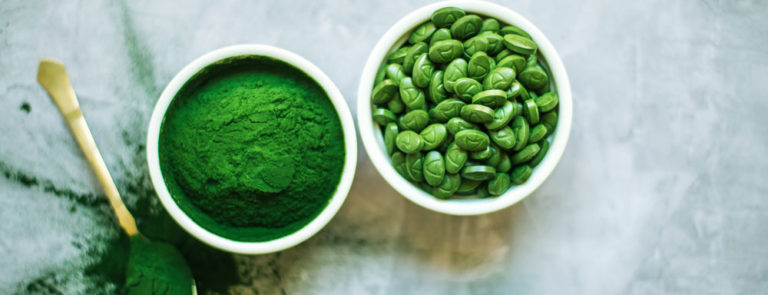
A model created for Oceanography magazine predicts that the world’s food production problems could be sorted out by growing microalgae in coastal aquaculture farms. Algae, seaweed and aquatic plants not only score high in protein (9-25 per cent), but are also highly scalable. The green sludge, which grows both in fresh and seawater, promises to meet 100 per cent of global protein demands by 2050. These picayune organisms come bearing essential amino acids, Omega-3, 6 and 7 acids, and Vitamins A, D and E. The nutritional content prize goes to Chlorella and Spirulina.
Ghee Wiz

Waste not, want not goes the maxim of the ever-generous cow. India’s ghee industry, which was worth Rs 2,624 billion in 2021, produces 91,000 tonnes of ghee residue every year. The light-brown by-product is loaded with protein, energy and minerals, and can be delectably caramelised for bakery and confectionary products like khoya gulab jamun and atta laddoos—all Instagramophile shtick.
Catch the Bug
Creepie crawlies in the bathroom are bad enough, but larvae on your plate? The UN Food and Agriculture Organisation doesn’t think being an insectivore is such a bad idea. Insects are available everywhere, are cheap to farm and don’t have the carbon footprint of a Middle Eastern diplomat. Why not tickle your palate with any of the 1,900-plus edible insects available in the ecosystem?
Queasy about a fried spider in your lunchbox? Just grind insects into a powder or a paste to get that additional protein and mineral boost. Muji’s cricket crackers, launched in May 2020, sold out in a day. A beloved South Korean snack is beondegi, made by boiling silky worm pupae. Don’t wriggle: superchef Gordon Ramsay tried Bastar red ant chutney and couldn’t stop weeping praise on it.
Wheat is the matter
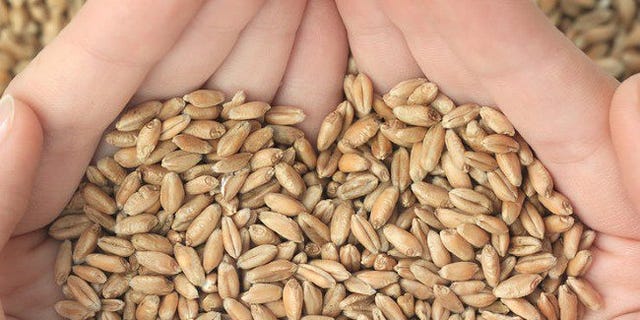
Gluten has given wheat a bad name. But there are lesser-known ears of wheat which you can ask your neighbourhood grocer to stock. Chances are he has never heard of buckwheat; this nutty-tasting pseudo-grain is a higher protein alternative to the flour used in pasta. Millets are one of the first gluten-free domesticated plants grown in over 130 countries and are the traditional food for around 60 crore people in Asia and Africa. The UN declared 2023 as the International Year of Millets after India, which is the largest producer of this crop, proposed it.
“Millet is a collective term for a few small-seeded annual grasses cultivated on marginal lands in temperate and tropical regions. Some of the common millets in India are Ragi (Finger millet), Jowar (Sorghum), Sama (Little millet), Bajra (Pearl millet), and Variga (Proso millet),” says independent chef consultant and trainer Harish Rao. What makes it a super crop?
Millets are photo-insensitive (do not require a specific photoperiod for flowering), can grow on poor soils, and have low carbon and water footprint—rice plants need thrice the amount of water to grow. “When it comes to sustainability, millets score way higher than wheat. They don’t spoil easily, are drought-resistant and don’t require aggressive use of pesticides, fungicides and chemicals,” adds nutritionist Ishi Khosla.
Like millets, the African grain fonio has no gluten and is a Nutri-box. Another nutty option is the Teutonic Splet, an age-old grain used by Austrians and Germans to make bread and cakes. Farmers love it and you should too—it has a thick outer husk that repels bugs and pests, thereby showing pesticides the red flag. Then there is the nutritious Khorasan, which can be bought as whole grain, couscous and flour.
Khorasan kernels add flavour to stews, soups, pulavs and salads. Since sourdough is the substance of the moment, the flour of the mild-flavoured Ethiopian Teff is perfect for flatbread. It grows even during drought and rainy places, and stores well too. Sweet and savoury preparations with Teff attest to its versatility.
Weed Them In
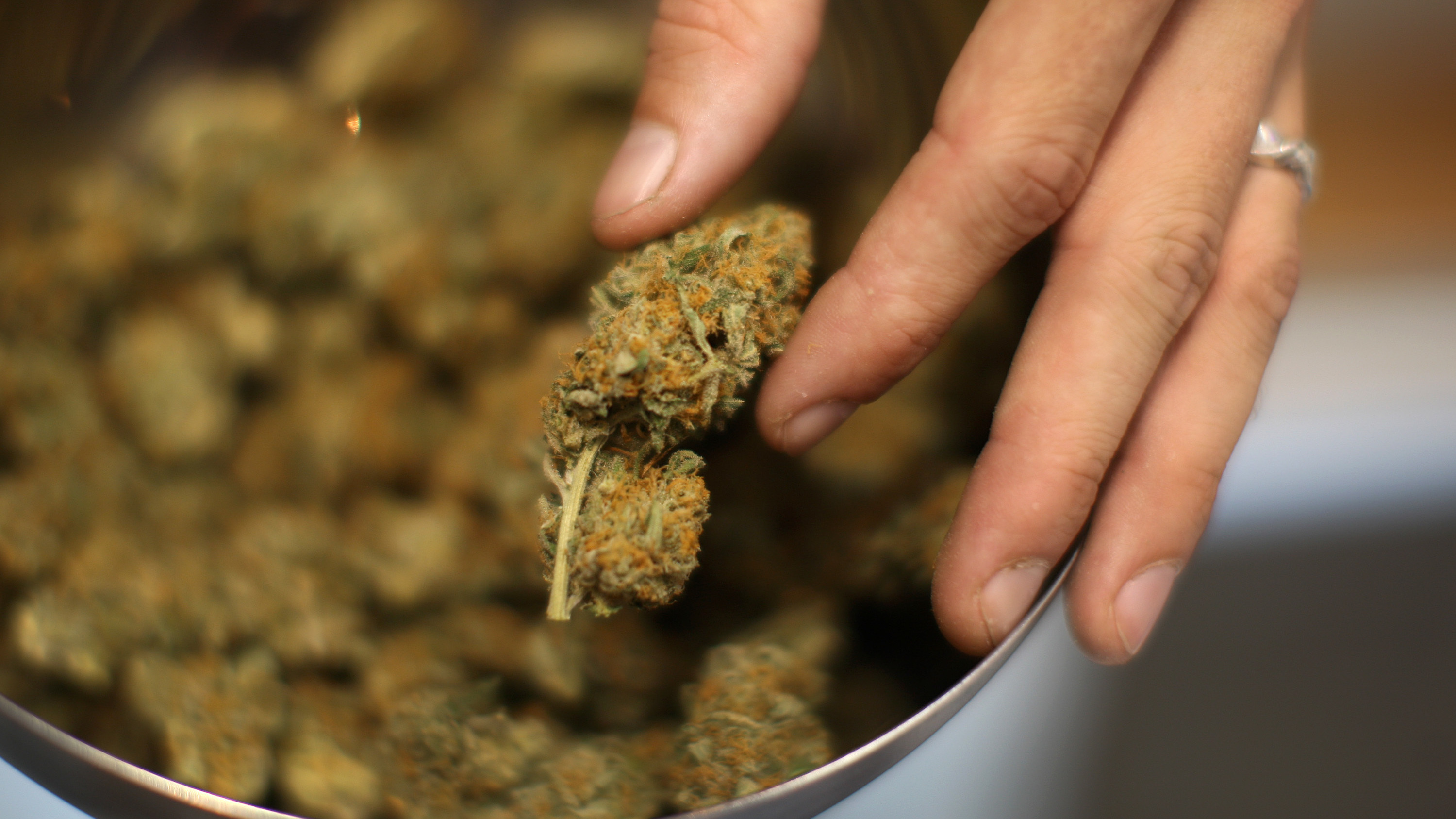
“Now ’tis spring, and weeds are shallow-rooted; suffer them now and they’ll o’er grow the garden,” wrote Shakespeare. Exactly what the world needs. Duckweed, laver seaweed, wakame weed etc., will add a spring to your step. The bright-green stuff colonising the surface of ponds and lakes could be a good ingredient for affordable food. Called ‘nori’ in Japanese, any foodie worth his wasabi would be familiar with the pleasantly oily taste of laver seaweed that sushi comes rolled in.
Japanese cuisine depends on it to bring out the umami taste. Now, the Welsh are using weed to make bread. Another trailing green miracle the Japanese love is wakame seaweed, which contains Omega 3 acids, present almost exclusively in certain fatty fish. It is often sold in dried form and rehydrated for soups, salads, stir-fries and side dishes. The USP of seaweed is they are all-weather friends; no need for nasty fertilisers or pesticides.
Eat the Package
When the going gets tough, the plants get going. About 400 million tonnes of plastic waste is produced annually—India leads with 12,994,100 tonnes a year. To replace plastic, the future could be using natural polymers to get packing. Notpla (an abbreviation of No Plastic), an all-natural packaging solutions company, whose motto is “we make packaging disappear” uses seaweed and plants to make biodegradable sachets to stock or carry stuff, including protein shakes for athletes on the go.
Notpla grabbed eyeballs recently by replacing single-use plastic cups and bottles with its products at the London Marathon. It made seaweed-coated containers for the global food delivery company Just Eat as a smart publicity move, suggesting Zomato or Swiggy can dump plastic. “Packaging keeps out oxygen, microbes and infection to preserve the product inside. If one puts an edible wrapping, one still needs
a protective cover on that. To do away with plastic, a product called Ooho makes water blobs—pop-in-the-mouth water sachets wrapped in edible seaweed covering,” says Kanwar. What’s more, seaweed tastes good. Ask the Japanese.
Plant Burger

Cooking Time: 15 mins
Recipe Makes: 8 servings
Prep time: 25 mins
Ingredients:
● 3 cups (750 ml) cooked quinoa
● 1 1/2 cups (375 ml) canned low-sodium black beans, rinsed and drained
● 142 g baby kale or baby spinach
● 1 large red beet, peeled and grated
● 1 large carrot, peeled and grated
● 1 1/2 cups oats, finely ground
● 1 tbsp vegetable bouillon
● 1/2 tsp ground cumin
● 1/2 tsp smoked paprika
● 2 tbsp olive oil, divided
● 8 whole wheat buns
● 1/2 cup vegan mayonnaise
● 2 orange tomatoes, sliced
● 1 red onion, thinly sliced
● 1 avocado, thinly sliced
Method:
● Mash together quinoa and black beans in a large bowl. Remove and set aside one cup of kale for burger topping. Chop the remaining kale and add to the quinoa mixture. Add grated vegetables, ground oats, vegetable bouillon, cumin and paprika.
● Divide mixture into 8 patties; cover and refrigerate for about 15 minutes or until firm.
● Heat 1 tbsp oil in a nonstick skillet over medium heat and cook four patties, turning once, until browned. Repeat with remaining oil and patties. Evenly spread buns with vegan mayonnaise; top with burgers, reserved kale, tomatoes, onion and avocado.
Millet Sannas with Spinach and Broccoli
Ingredients:
For grinding
● Fox tail millet (thinai): 500 gm
● Urad dal: 100 gm
● Salt: to taste
For the filling
● Broccoli: 50 gm
● Spinach: 50 gm
● Tomatoes: 20 gm
● Garlic chop: 10 gm
● Salt: to taste
● Pepper: a pinch
● Lemon juice: 1 no.
● Olive oil: 10 ml
For the fillings
● Add oil to a pan
● Add garlic and sauté it well;
when it turns golden brown, add broccoli and toss it well.
● Then add spinach and tomato slices; once spinach is done, season it with salt and pepper
● Before removing it from the heat, add a little lime juice
Method:
● Soak and clean the millet
● Grind the urad dal to a fine paste
● Once the batter is removed from the grinder, add the soaked millet to the dal and mix well with a little salt
● Leave it to ferment for a few hours
● After the batter is fermented, take a muffin mould, and add the batter to it
● Steam the sannas for 10 minutes and de-mould them
● Cut sannas into half
● Place the filling inside the sannas and serve hot
● It can be served with mint chutney or any of your choice








